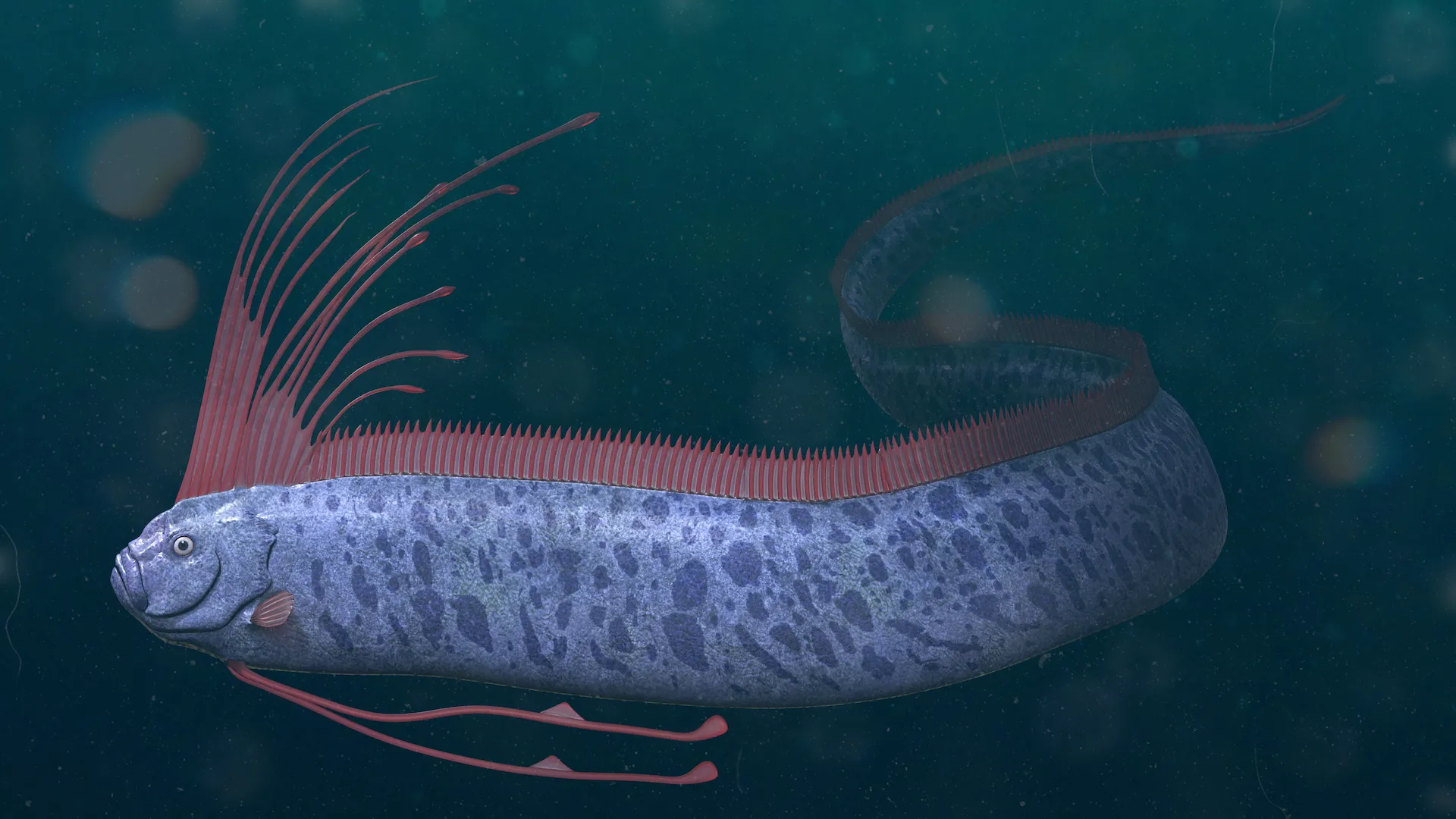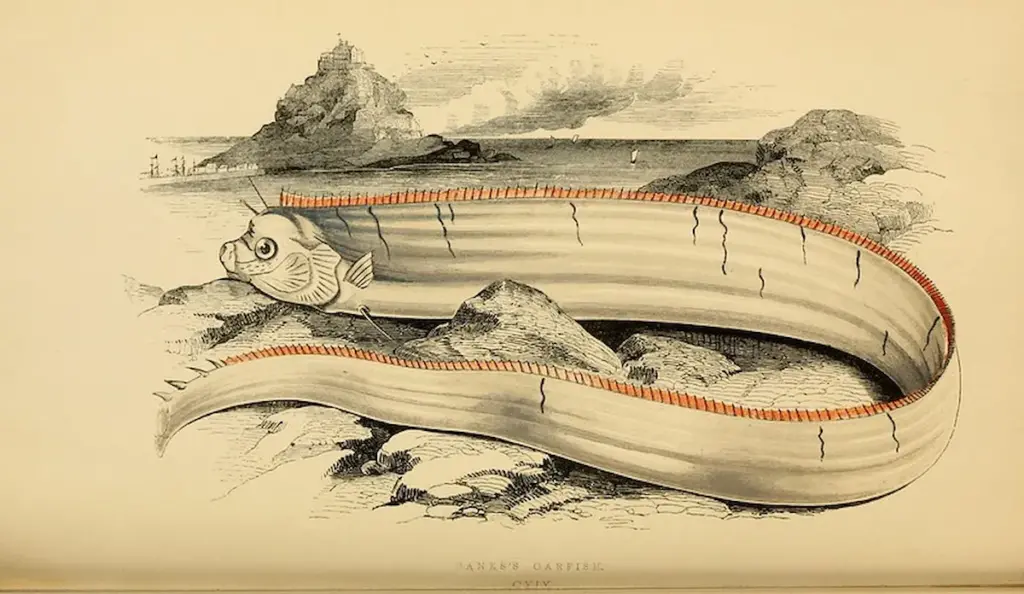Why are Oarfish Known as Doomsday Fish?
Meet one of the longest and most odd-looking fish in the sea

Throughout our ocean, there are some marine species that are so massive or unique looking that they just might explain ancient legends of sea monsters. The giant oarfish (Regalecus glesne) is a quintessential example of just that. This strikingly large, odd-looking fish is known for its distinctively long, ribbon-shaped body that enables the species to float inconspicuously throughout the water column. Oarfish can grow to more than 30 feet, which makes them quite the sight to behold.
These animals aren’t just unique because of their size, however. Oarfish are filter feeders and primarily eat krill, plankton and other small crustaceans. Other than their long, ribbony appearance, the species also boasts large eyes and foreboding red spines that stick out to form a crown-like cluster. They are deep-sea dwellers, thriving most often in the zone least explored by scientists to date: the mesopelagic zone (waters down to 1,000 meters). Floating vertically through these dark waters, their silvery, reflective bodies help oarfish blend into their surroundings if they do happen upon patches of light. This type of camouflage may be simple, but it is certainly effective!
Never Miss An Update
Sign up for Ocean Conservancy text messages today.
There are a few theories on the origin of the oarfish’s name. One guess is that their long, flat bodies simply resemble oars; another suggests the name could have come from the “rowing” motions they make as they swim in such a peculiar way through the water. However, oarfish also have another much more alarming nickname: the doomsday fish. In some areas of the world, these creatures are seen as being harbingers of bad news, particularly disasters or destruction. The legend is that if you see an oarfish, it is a warning sign from higher powers that disasters such as earthquakes are soon to occur. According to numerous news reports, before Japan’s 2011 earthquake (one of the most catastrophic in history) a total of 20 oarfish washed ashore.
While many legends may surround these creatures, it is unusual for humans to encounter oarfish. They primarily reside within the deep sea, so if one is spotted close to the surface, it typically indicates that the creature is sick, dying or at least disoriented.

Setting aside what we currently know about oarfish and the lore surrounding the species, it’s crucial to remember that current knowledge of oarfish behavior and their conservation status is limited. While this is unsurprising given that they thrive in one of the most unexplored areas of our ocean, it doesn’t mean we can’t still work to protect them. Scientists are learning more each day about the ever-growing plastic pollution crisis and its detrimental impacts on all marine ecosystems, including the deep sea. The full implications of this crisis may not be completely understood yet, but what has never been clearer is that we must take action.
Fortunately, we know where to begin when it comes to solving this problem: we must make less plastic. Based on nearly four decades of data from our International Coastal Cleanup®, Ocean Conservancy has charted a course to plastic-free beaches by calling for source-reduction policies for the most common items polluting our shorelines and waterways around the world. Eliminating the production of these items would decrease about 1.4 million tons of plastics produced annually in the United States alone, preventing that much plastic from becoming pollution in our ocean in the first place. Like all our ocean species, the ability for deep-sea animals like oarfish to live in a safe, trash-free habitat depends on whether or not we decide to take action. Act now and help Ocean Conservancy turn the tide on the plastic pollution crisis.